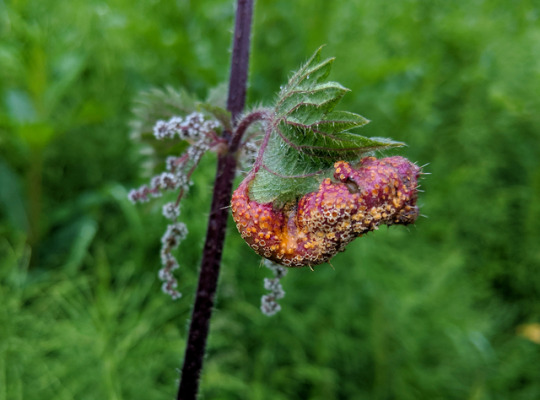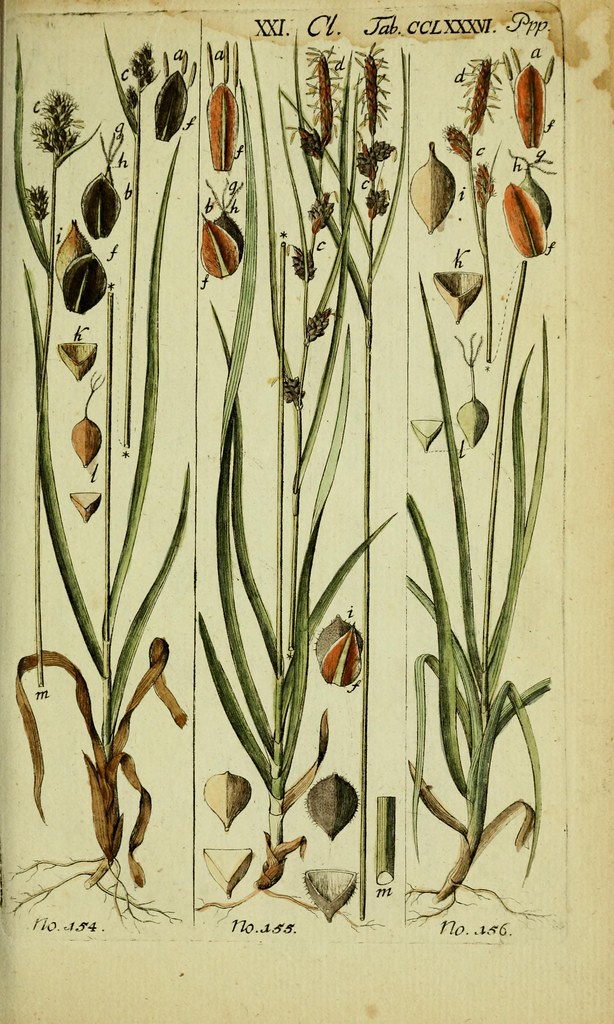#Carex dioica
Video
n372_w1150 by Biodiversity Heritage Library
Via Flickr:
Beschreibung und Abbildung der theils bekannten, theils noch nicht beschriebenen Arten von Riedgräsern,. Wittenberg,1801-1806.. biodiversitylibrary.org/page/15462881
#Carex#Cyperaceae#Mertz Library#The New York Botanical Garden#bhl:page=15462881#dc:identifier=http://biodiversitylibrary.org/page/15462881#flickr#botanical illustration#scientific illustration#Carex dioica#carex capitata#carex pulicaris#Northern bog sedge#dioecious sedge#capitate sedge#flea sedge#sedge#sedges
1 note
·
View note
Photo



Puccinia urticata on Urtica dioica
It’s hard to walk by banks covered in common nettle without noticing this fiery and gruesome rust fungus taking hold of and deforming the plant’s limbs.
It’s best described as a species complex with a life cycle which might alternate between two hosts- in the British Isles often a nettle (U. dioica or U. urens) and a sedge (mostly Carex sp.), but its ‘sub-species’ can also be found on Aster and Ribes.
Here you can see some beautiful up-close photos of its structures.
#puccinia urticata#rust fungus#basidiomycota#fungi#mycology#urtica dioica#common nettle#urticaceae#botany#plant pathogens#scotland#plantblr#gardeners on tumblr#plants
63 notes
·
View notes
Text
Alder Alluvial Forest
Alluvial forests with Alnus glutinosa and Fraxinus excelsior (Alno-Padion, Alnion incanae, Salicion albae) comprises woods dominated by alder Alnus glutinosa and willow Salix spp. on flood plains in a range of situations from islands in river channels to low-lying wetlands alongside the channels. The habitat typically occurs on moderately base-rich, eutrophic soils subject to periodic inundation.
Many such woods are dynamic, being part of a successional series of habitats. Their structure and function are best maintained within a larger unit that includes the open communities, mainly fen and swamp, of earlier successional stages. On the drier margins of these areas other tree species, notably ash Fraxinus excelsior and elm Ulmus spp., may become abundant. In other situations the alder woods occur as a stable component within transitions to surrounding dry-ground forest, sometimes including other Annex I woodland types. These transitions from wet to drier woodland and from open to more closed communities provide an important facet of ecological variation. The ground flora is correspondingly varied. Some stands are dominated by tall herbs, reeds and sedges, for example common nettle Urtica dioica, common reed Phragmites australis, greater tussock-sedge Carex paniculata, and meadowsweet Filipendula ulmaria, while others have lower-growing communities with creeping buttercup Ranunculus repens, common marsh bedstraw Galium palustre, alternate-leaved golden-saxifrage Chrysosplenium oppositifolium and marsh-marigold Caltha palustris.
1 note
·
View note
Photo




Puccinia caricina -rust fungus on common nettle (Urtica dioica). The fungus produces aeciospores on nettle but other spore types (urediospores and teliospores) on different Carex species.
#fungi#fungus#mycology#nature#plant disease#plant pathogen#pucciniales#basidiomycota#rust#nettle#microscopy#400X#spores
50 notes
·
View notes
